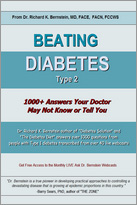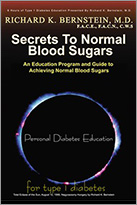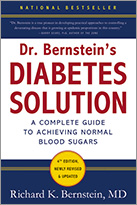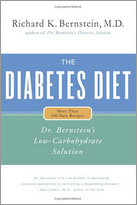CARBOHYDRATE
I’ve saved carbohydrate for last because it’s the food group that adversely affects blood sugar most profoundly. If you’re like most diabetics— or virtually everyone who lives in an industrialized society — you probably eat a diet that’s mostly carbohydrate. Grains. Fruit. Bread. Cake. Beans. Snack foods. Rice. Potatoes. Pasta. Breakfast cereal. Bagels. Muffins. They look different, but dietarily speaking, they’re essentially the same.
If you are already obese, you know and I know that you crave— and consume—these foods and probably avoid fats. As studies show, you would be better off eating the fat than the carbohydrate. Fat alone will be burned off. A combination of high-carbohydrate foods and fat will foster fat storage.
It is, therefore, a myth that Americans are overweight due to excessive fat consumption. Americans are fat largely because of sugar, starches, and other high-carbohydrate foods.
According to statistics released by the U.S. Department of Agriculture, added sugar consumption hit an all-time high in 1999 (the last year for which statistics were available), at a whopping 158 pounds per American per year, an increase of 30 percent over 1983. The key word here is “added.” This doesn’t account for starches and sugars naturally present in food. According to a report from the Oregon Health Sciences University, a 12-ounce Starbucks Grande Caramel Mocha drink contains 45 teaspoons of added sugar.
This increase not coincidentally corresponds with the timing of recommendations to eat less fat. It was 1984 when the National Institutes of Health (NIH) began advising everyone within shouting distance to cut fat intake. It also corresponds quite neatly with the creation of a whole new, multibillion-dollar industry in low- and nonfat foods, many of which are extremely high in sugar. For more than ten years, the government had planned to issue a report once and for all damning fat as the demon some scientists were sure it was. The problem was, researchers couldn’t “reverse engineer” the actual data to make the science fit the assumption. Unfortunately, the program to indict fat was left to die a quiet death, and not so much as a press release was issued to say, “We were wrong.”And so many of us still don’t know the truth. They were wrong.
No doubt the popular media have made you aware of the endless procession of books and diets and advertisements for foods all touting the value of high “complex carbohydrate” in the diet. Athletes “carboload” before big games or marathons. TV and radio commercials extol the virtues of Brand X sports drink over Brand Y because it contains more “carbos.”
As stunning as it sounds—and unbelievable, given the popular media’s recent love affair with a high “complex carbohydrate,” low-fat diet—you can quite easily survive on a diet in which you would eat no carbohydrate. There are essential amino acids and essential fatty acids, but there is no such thing as an essential carbohydrate. Furthermore, by sticking to a diet that contains no carbohydrate but has high levels of fat and protein, you can reduce your cardiac risk profile—serum cholesterol, blood lipids, et cetera—though you’d deprive yourself of all the supposed “fun foods” that we crave most.* We’ve all been trained to think that carbohydrates are our best, most benign source of food, so how can this be?
What if I, a physician, told you, a diabetic, to eat a diet that consisted of 60 percent sugar, 20 percent protein, and 20 percent fat? More than likely, you’d think I was insane. I’d think I was insane, and I would never make this suggestion to a diabetic (nor would I even make it to a nondiabetic). But this is just the diet the ADA recommended to diabetics for decades. On the surface, these recommendations seemed to make sense because of kidney disease, heart disease, and our elevated lipid profiles. But this is what is known as single-avenue thinking. It seemed logical to insist that dietary intake of protein and fat be reduced, because no one had looked at elevated blood sugars and the high levels of insulin necessary to bring them down as the possible culprits.
So if you eat very little fat and protein, what’s left to eat? Carbohydrate. As I discovered in my years of experimentation on myself, and then in my medical training and practice, the real dietary problem for diabetics is not only fast-acting carbohydrate but also large amounts of any carbohydrate. In either case, the result is high blood sugars requiring large amounts of insulin to try to contain them. So what are carbohydrates?
The technical answer is that carbohydrates are chains of sugar molecules. The carbohydrates we eat are mostly chains of glucose molecules. The shorter the chain, the sweeter the taste. Some chains are longer and more complicated (hence, “simple” and “complex” carbohydrates), having many links and even branches. But simple or complex, carbohydrates are composed entirely of sugar.
“Sugar?” you might ask, holding up a slice of coarse-ground, sevengrain bread. “This is sugar?”
In a word, yes, at least after you digest it. With a number of important exceptions, carbohydrates, or foods derived primarily from plant sources that are starches, grains, and fruits, have the same ultimate effect on blood glucose levels that table sugar does. (The ADA has recently recognized officially that, for example, bread is as fast-acting a carbohydrate as table sugar. But instead of issuing a recommendation against eating bread, its response has been to say that table sugar is therefore okay, and can be “exchanged” for other carbohydrates. To me, this is nonsense.) Whether you eat a piece of the nuttiest whole-grain bread, drink a Coke, or have mashed potatoes, the effect on blood glucose levels is essentially the same— blood sugar rises, fast.
* You’d also be missing the vitamins and other nutrients contained in lowcarbohydrate vegetables, so a zero-carbohydrate diet is not in my ball game.
As noted in the introduction to this chapter, the digestion process breaks each of the major food groups down into its basic elements, and these elements are then utilized by the body as needed. The basic element of most carbohydrate foods is glucose. We usually think of simple carbohydrates as sugars and complex carbohydrates as fruits and grains and vegetables. In reality, most fruit and grain products, and some vegetables, are what I prefer to talk about as “fast-acting” carbohydrates. Our saliva and digestive tract contain enzymes that can rapidly chop the chains down into free glucose. We haven’t the enzymes to break down some carbohydrates, such as cellulose, or “indigestible fiber.” Still, our saliva can break starches into the shorter chains on contact and then convert those into pure glucose.
Pasta, which is often made from durum wheat flour and water (but can also be made from plain white flour and egg yolks, or other variants), has been touted as a dream food—particularly for runners carbo-loading before marathons—but it quickly becomes glucose, and can raise blood sugar very rapidly for diabetics.
In the type 2 diabetic with impaired phase I insulin response, it takes hours for the phase II insulin to catch up with the postprandial levels of glucose in the blood, and day after day, during that time, the high blood sugars can wreak havoc. In the diabetic who injects insulin, there is a tremendous amount of (rarely successful) guesswork involved in finding the proper dosage and timing of insulin to cover a carbohydrate-heavy meal, and the injected insulin not only doesn’t work fast enough, it is highly unpredictable when taken in large doses in attempts to cover large amounts of carbohydrate (see Chapter 7, “The Laws of Small Numbers”).
Some carbohydrate foods, like fruit, contain high levels of simple, fast-acting carbohydrates. Maltose and fructose—malt sugar and fruit sugar—for example, are slower-acting than sucrose—table or cane sugar—but they will cause the same increase in blood sugar levels. It may be the difference between nearly instant elevation and elevation in 2 hours, but the elevation is still high, and a lot of insulin is still required to bring it into line. And, if the insulin is injected, there’s the further problem of guesswork in timing and dosage. Despite the old admonition that an apple a day keeps the doctor away, I haven’t had fruit since 1970, and I am considerably healthier for it. Some whole-plant vegetables, that is, those that come mostly from the stalks and leaves, are of value to the diabetic and nondiabetic alike because they contain considerable amounts of vitamins, minerals, and other nutrients. (The recipe section of this book shows you a number of
tasty and satisfying ways to work these vegetables into your diet.)
As noted previously, most Americans who are obese are overweight not because of dietary fat, but because of excessive dietary carbohydrate. Much of this obesity is due to “pigging out” on carbohydraterich snack foods or junk foods, or even on supposed healthy foods like whole-grain bread and pasta. It’s my belief that this pigging out has little to do with hunger and nothing at all to do with being a pig. I’m convinced that people who crave carbohydrate have inherited this problem. To some extent, we all have a natural craving for carbohydrate— it makes us feel good. The more people overeat carbohydrates, the more they will become obese, even if they exercise a lot. But certain people have a natural, overwhelming desire for carbohydrate that doesn’t correlate to hunger. These people in all likelihood have a genetic predisposition toward carbohydrate craving, as well as a genetic predisposition toward insulin resistance and diabetes. (See page 181, “The Thrifty Genotype.”) This craving can be reduced for many by eliminating such foods from the diet and embarking upon a low carbohydrate diet.
In light of the above, you might guess that I advocate a no-carbohydrate diet. In fact, in the next chapter you’ll discover that I include small amounts of carbohydrate in my meal plan. Back in 1970, as I was still experimenting with blood sugar normalization, I remembered that during the twentieth century a new vitamin had been discovered every fifteen years or so. While there may be no such thing as an essential carbohydrate, it seemed reasonable to conclude that, since our prehistoric ancestors consumed some plants, plant foods might well contain essential nutrients that were not yet present in vitamin supplements and had not even been discovered. I therefore added small amounts of low-carbohydrate vegetables (not starchy or sweet) to my personal meal plan. All of a sudden I was eating salads and cooked vegetables instead of the bread, fruit, cereal, skim milk, and pasta that I had been eating on my prior ADA diet. It took a while to get used to salads, but now I relish them.
Only recently, in my lifetime, have phytochemicals (essential nutrients found in plant foods) been discovered. Phytochemicals are now incorporated into some vitamin pills, but research on the use of isolated phytochemicals is still in its early stages. You may have heard of such phytochemical supplements as lutein, lycopene, and so on. It would appear that many chemicals— large numbers of which are likely not even known about yet—work together to provide beneficial effects. So at this point, it certainly
makes sense to eat low-carbohydrate salads and vegetables. (Although fruits contain the same phytochemicals as vegetables, they are too high in fast-acting carbohydrate to be part of a restricted-carbohydrate diet, as the next chapter will explain.)




